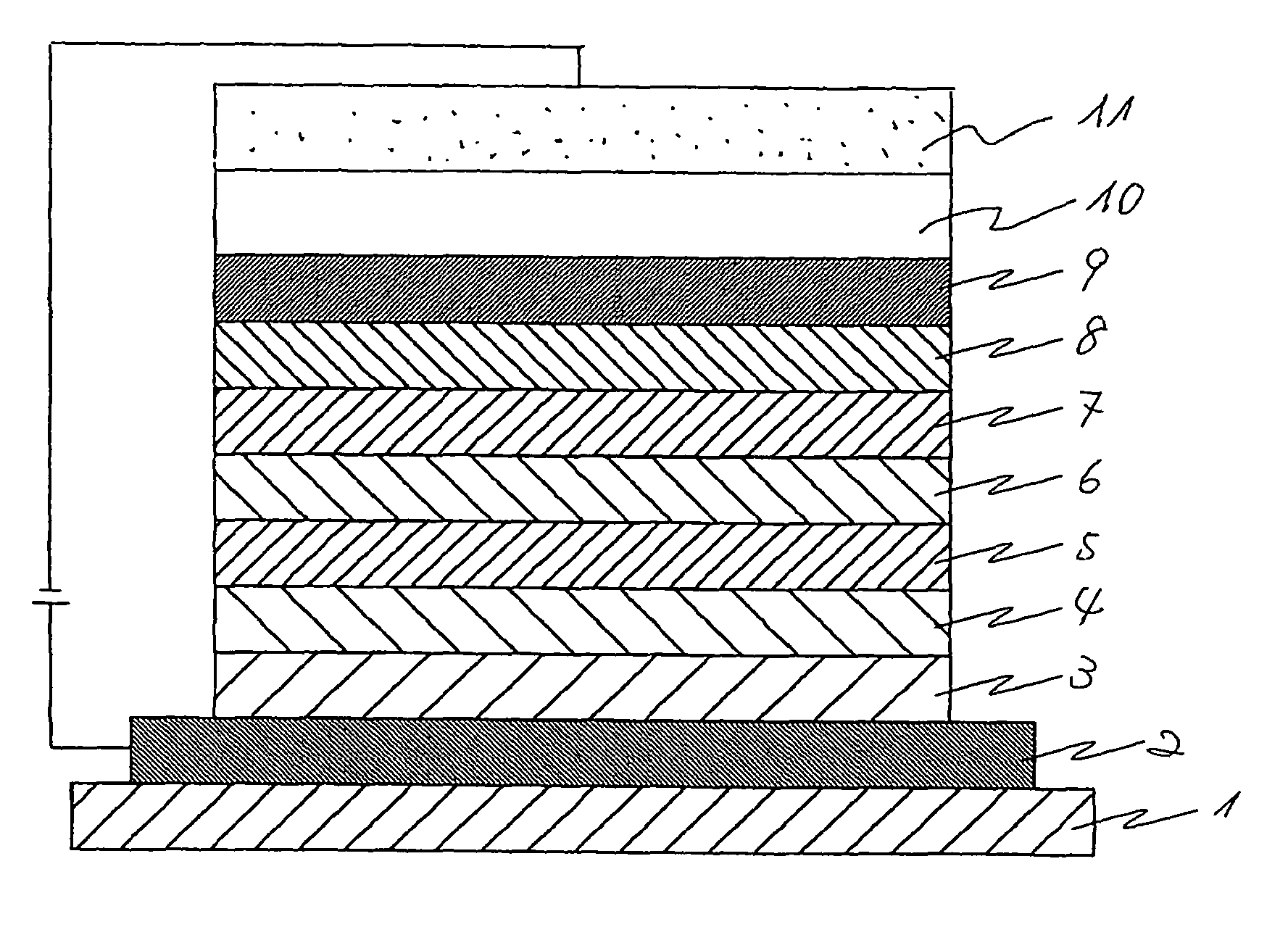Organic EL devices
a technology of organic el and devices, which is applied in the direction of discharge tube/lamp details, discharge tube luminescnet screens, natural mineral layered products, etc., can solve the problems of low luminescent efficiency, low colour reproducibility, and low luminescent efficiency, and achieves superior chromaticity (whiteness), less changes in chromaticity (whiteness), and superior chromaticity
- Summary
- Abstract
- Description
- Claims
- Application Information
AI Technical Summary
Benefits of technology
Problems solved by technology
Method used
Image
Examples
example 1
[0166]A transparent glass, that is a substrate, on one of whose surfaces an anode made of an ITO layer of 110 nm film thickness had been formed was prepared, and washed with an alkali and then with pure water, dried, and then washed with UV-ozone.
[0167]On the anode on thus washed glass, using a vacuum-vapor-deposition apparatus (a carbon crucible, at a vapor-deposition speed of 0.1 nm / s, in vacuo around 5.0×10−5 Pa), an HI layer of 10 nm film thickness was prepared to be a hole-injecting layer.
[0168]On the hole-injecting layer, using a vacuum-vapor-deposition apparatus (a carbon crucible, at a vapor-deposition speed of 0.1 nm / s, in vacuo around 5.0×10−5 Pa), an HT layer of 50 nm film thickness was prepared to be a hole-transporting layer.
[0169]On the hole-transporting layer, using a vacuum-vapor-deposition apparatus (a carbon crucible, in vacuo around 5.0×10−5 Pa), a layer of 5 nm film thickness was prepared by co-vapor-deposition of a host material HT and a red dopant RD to be a re...
examples 2-14
[0176]Similar to example 1, examples 2-14 involve in their blue and green luminescent layers at least one common derivative and were prepared similarly to example 1 except that their blue and green luminescent layers were changed as shown in table 1 below.
[0177]That is, examples 2-4 involve as host materials of the blue and green luminescent layers a common derivative BH1, which is a distyryl arylene derivative, similar to example 1. Examples 5-7 involve as dopants of the blue and green luminescent layers common derivatives BD1 and GD2 (a distyrylamine derivative), respectively. Examples 8 and 9 involve as host materials of the blue and green luminescent layers common derivatives BH2 and GH1 (a metal-quinolinolate complex), respectively. Example 10 involves as host materials of the blue and green luminescent layers a common derivative BH5 a carbazole derivative). Example 11 involves as host materials of the blue and green luminescent layers a common derivative BH3 (an anthracene der...
example 15
[0179]Example 15 was prepared similarly to example 1 except that a blocking layer of 3 nm film thickness of HT vapor-deposited was provided between the blue and red luminescent layers. Example 15 also involved as host materials of the blue and green luminescent layers a common derivative BH1 (a distyryl arylene derivative).
PUM
| Property | Measurement | Unit |
|---|---|---|
| transparency | aaaaa | aaaaa |
| roughness | aaaaa | aaaaa |
| electric resistance | aaaaa | aaaaa |
Abstract
Description
Claims
Application Information
 Login to View More
Login to View More - R&D
- Intellectual Property
- Life Sciences
- Materials
- Tech Scout
- Unparalleled Data Quality
- Higher Quality Content
- 60% Fewer Hallucinations
Browse by: Latest US Patents, China's latest patents, Technical Efficacy Thesaurus, Application Domain, Technology Topic, Popular Technical Reports.
© 2025 PatSnap. All rights reserved.Legal|Privacy policy|Modern Slavery Act Transparency Statement|Sitemap|About US| Contact US: help@patsnap.com


